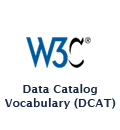PRODUCT
Your Knowledge Democratization Platform
metaphactory transforms your data into consumable, contextual & actionable knowledge and drives continuous decision intelligence using knowledge graphs and AI

Why metaphactory?
Flexible platform leveraging the power of neuro-symbolic integration
Flexibility
Knowledge graph platform based on open standards
Trustworthy & explainable AI
Native integration of grounded AI tools with human-in-the-loop approach

Fast time to value
Ability to take a top-down or bottom-up approach to knowledge management
Risk mitigation
Ready-to-use enterprise product from proven vendor
Static products
- Rigid solutions focused on specific use cases
- Expensive to adjust to needs
- Proprietary, closed systems
Build your own
- High risk & high investment
- Long ramp-up
- Unclear maintenance
How does it work
Knowledge is one of the most valuable assets an organization can have. When data is made into consumable, contexualized and actionable knowledge, you’ll be able to make sound business decisions grounded in insights that consider relevant organizational and industry context.
metaphactory is an enterprise knowledge graph-based platform that leverages semantic knowledge modeling and knowledge discovery capabilities to support you with decision intelligence and drive knowledge democratization across the organization. AI capabilities support both the building and exploration of the underlying knowledge graph, making it easy to surface and make sense of your data while also assisting in the knowledge graph construction process.
Semantic knowledge modeling
With a semantic knowledge model, you can eliminate ambiguity, add context that helps you and relevant stakeholders better understand the meaning of your data, and connect the dots in your enterprise data landscape. metaphactory’s semantic knowledge modeling can support you with use cases such as:
» Building a semantic layer for your enterprise information architecture
» Creating product, process, system or environment digital twins with collaborators across various roles, departments and technical skill levels
» Easily leveraging public ontologies and vocabularies to enhance your semantic model
Insights & knowledge discovery
AI-native apps and conversational interfaces grounded in a semantic model allow you to find precisely the information you need, exactly when you need it—and uncover hidden connections or make breakthrough discoveries that could be buried in your data. Knowledge discovery with metaphactory enables:
» Extraction of valuable insights and their transformation into actionable knowledge
» A model-driven approach to app-building that powers advanced and innovative solutions
» Rapid prototyping of applications to validate new use cases, saving significant time and financial investment
Success stories

Bridging the past and present: Unifying the Sloane Collection with knowledge graphs

Knowledge Democratization with an Enterprise Knowledge Graph at Boehringer Ingelheim

Building explainable and trustworthy recommendation systems: What we learned from IKEA at KGC 2023
metaphactory features in a nutshell
Platform built on open standards
metaphactory's generic approach based on open standards offers great flexibility in different industries and supports interoperability and reusability across use cases and business functions.

RDF Data Model
Standardized Data Model
Flexible, open standard for data respresentation

Ontology Language

Vocabularies

Rules & Constraints

Query Language

Linked Data Platform

Dataset descriptions

Data cataloging standards

Web Components

HTML Templates

Microservice Packaging

REST APIs
Get started today!
Product news
metaphacts unveils metis, the new Knowledge-driven AI platform for Enterprises
July 15, 2025
metaphactory 5.8 introduces AI-assisted semantic modeling, making the modeling process faster and more accurate than ever
July 14, 2025
metaphactory 5.7 introduces enhanced vocabulary governance with term-level provenance & collaboration features
March 31, 2025
























